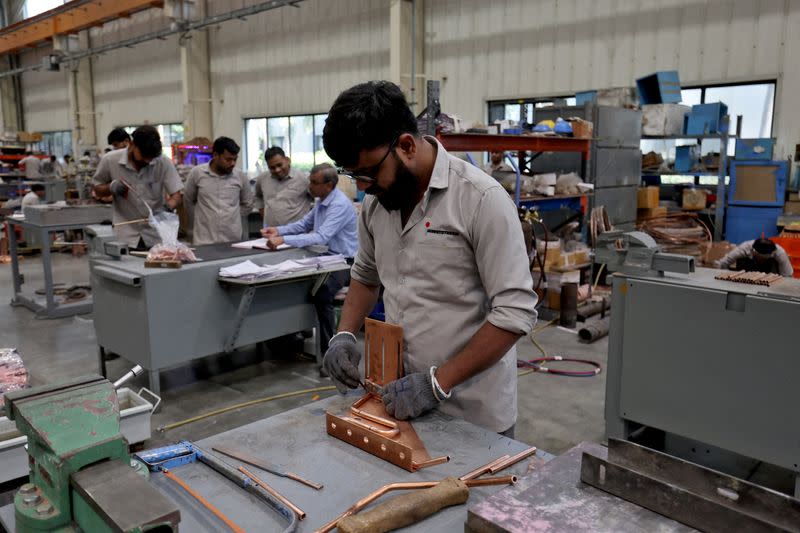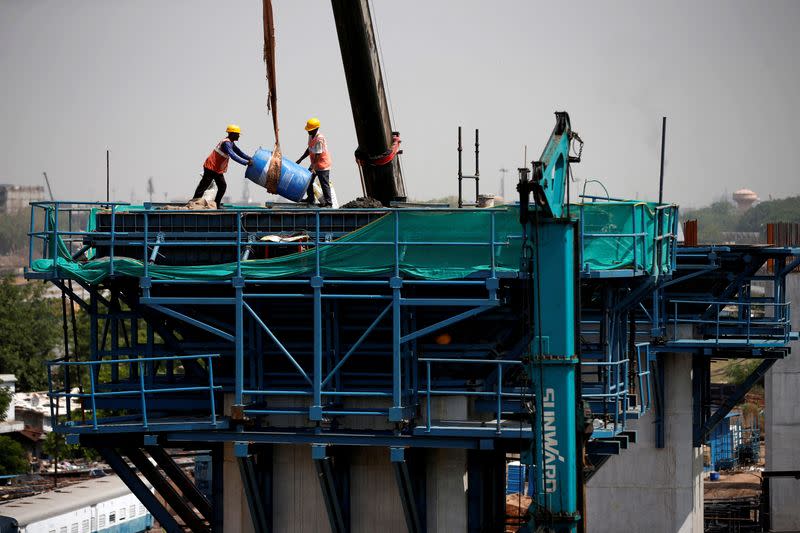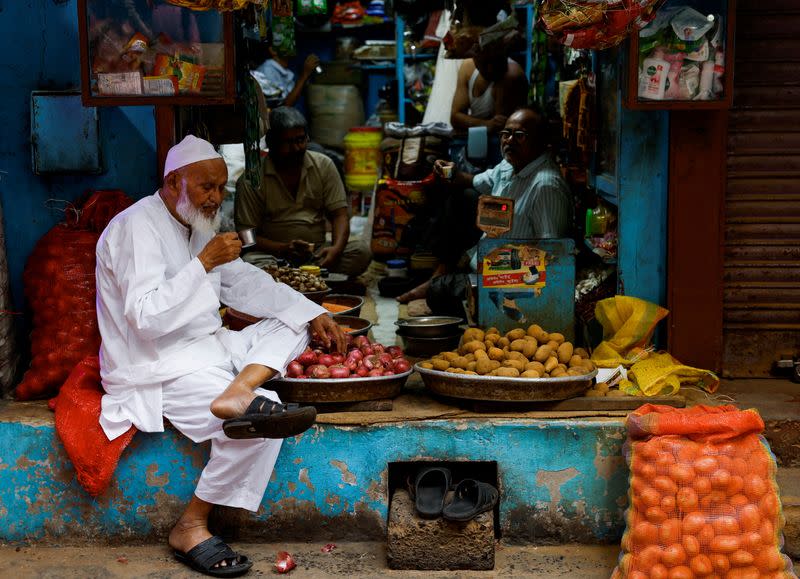India's fast economic growth lays firm ground for next government
By Manoj Kumar and Shivangi Acharya
NEW DELHI (Reuters) -India's economy grew at a faster-than-expected pace of 7.8% year-on-year in the first three months of 2024, helped by a strong performance in the manufacturing sector, and economists expect the momentum to continue this year.
The highest growth pace among the largest economies globally will bolster the economic record of Prime Minister Narendra Modi, who is hoping to win a rare third term in the national election, with results set to be released on June 4.
Investors are looking ahead to the election outcome and the full-year budget in mid-July to see what steps the new government might take to boost the economy.
The Reserve Bank of India's (RBI) record surplus transfer of 2.11 trillion rupees ($25.3 billion) will help the next government to increase state spending to bolster growth.
Garima Kapoor, economist, at Mumbai-based Elara Securities, said the growth figures come amid subdued inflation and a forecast of a normal monsoon, which could help boost consumer demand.
The arrival of India's monsoon rains can support farm output and rural wages.
"The high frequency indicators during the first two months of this financial year suggest 2024/25 fiscal year has started on a relatively stable footing," she said.
On Wednesday, S&P Global raised its sovereign rating outlook for India to "positive" from "stable", adding that regardless of the outcome of the national elections it expected broad continuity in economic reforms and fiscal policies.
It expects the economy to grow at 6.8% in the current fiscal year starting April, and close to 7% annually over the next three years.
The gross domestic product growth in January-March quarter was lower than a revised 8.6% expansion in the previous quarter, but higher than 6.7% forecast by economists in a Reuters poll, government data released on Friday showed.
Manufacturing output rose 8.9% year-on-year in March quarter, compared with a revised expansion of 11.5% in the previous quarter.
India's economic growth for the full 2023/24 fiscal year was revised up to 8.2%, also the highest among large economies globally, from an earlier government estimate of 7.6%.
In the January-March quarter, the headline growth figure was boosted by a sharp fall in subsidies, while gross value added (GVA), seen by economists as a more stable measure of growth, rose 6.3%, data showed.
For the previous quarter, GVA growth was revised to 6.8%.
Globally, economic activity remains resilient, with China's economy growing 5.3% year-on-year and the U.S. economy expanding at 1.3% annualised rate in March quarter amid signs of inflation easing, strengthening hopes of a pick up in India's exports.
The RBI's monetary policy committee is expected to hold benchmark repo rate at 6.50% at its June 5-7 meeting, with inflation staying above 4%, the mid-point of its 2-6% target, economists said in a Reuters poll.
UNEVEN RECOVERY, HIGH UNEMPLOYMENT
Despite mouth-watering growth numbers, India's consumer spending and rural growth remain tepid.
Farm output grew by just 0.6% in the March quarter while consumer spending, which accounts for about 60% of the economy, rose 4%, low by Indian standards.
Some economists say the economy needs to grow at a faster pace and for the benefits to percolate to poorer sections of society.
Raghuram Rajan, former governor of the Reserve Bank of India, said in an interview earlier this week India's economy needs to grow by around 9%-10% annually for next couple of decades to create good jobs for millions of educated young people.
(Reporting by Manoj Kumar, Aftab Ahmed; Additional reporting by Sarita Chaganti Singh, Aftab Ahmed in New Delhi and Nishit Navin in BENGALURU; editing by Philippa Fletcher and Toby Chopra)





